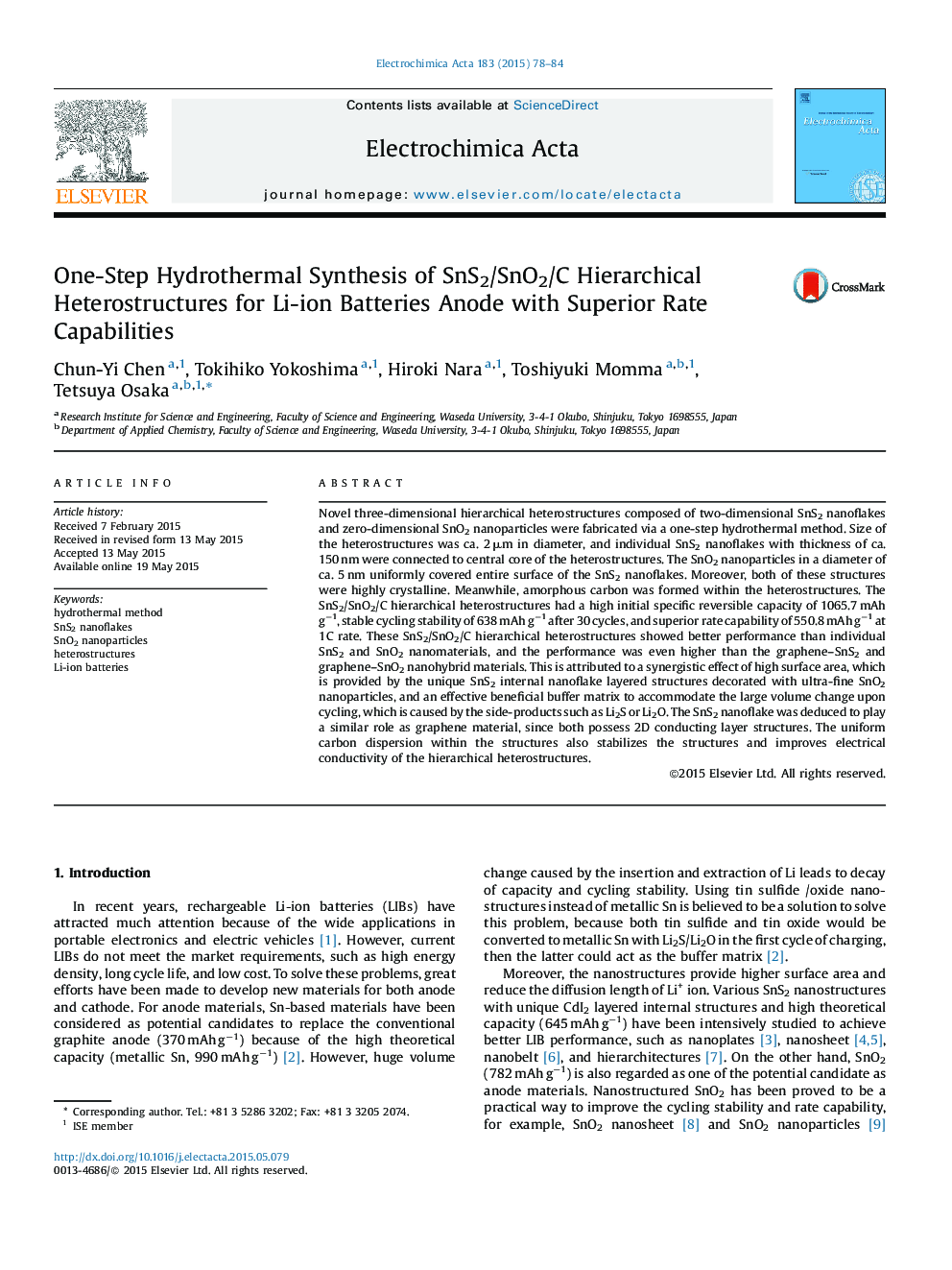| Article ID | Journal | Published Year | Pages | File Type |
|---|---|---|---|---|
| 183515 | Electrochimica Acta | 2015 | 7 Pages |
Novel three-dimensional hierarchical heterostructures composed of two-dimensional SnS2 nanoflakes and zero-dimensional SnO2 nanoparticles were fabricated via a one-step hydrothermal method. Size of the heterostructures was ca. 2 μm in diameter, and individual SnS2 nanoflakes with thickness of ca. 150 nm were connected to central core of the heterostructures. The SnO2 nanoparticles in a diameter of ca. 5 nm uniformly covered entire surface of the SnS2 nanoflakes. Moreover, both of these structures were highly crystalline. Meanwhile, amorphous carbon was formed within the heterostructures. The SnS2/SnO2/C hierarchical heterostructures had a high initial specific reversible capacity of 1065.7 mAh g−1, stable cycling stability of 638 mAh g−1 after 30 cycles, and superior rate capability of 550.8 mAh g−1 at 1C rate. These SnS2/SnO2/C hierarchical heterostructures showed better performance than individual SnS2 and SnO2 nanomaterials, and the performance was even higher than the graphene–SnS2 and graphene–SnO2 nanohybrid materials. This is attributed to a synergistic effect of high surface area, which is provided by the unique SnS2 internal nanoflake layered structures decorated with ultra-fine SnO2 nanoparticles, and an effective beneficial buffer matrix to accommodate the large volume change upon cycling, which is caused by the side-products such as Li2S or Li2O. The SnS2 nanoflake was deduced to play a similar role as graphene material, since both possess 2D conducting layer structures. The uniform carbon dispersion within the structures also stabilizes the structures and improves electrical conductivity of the hierarchical heterostructures.
